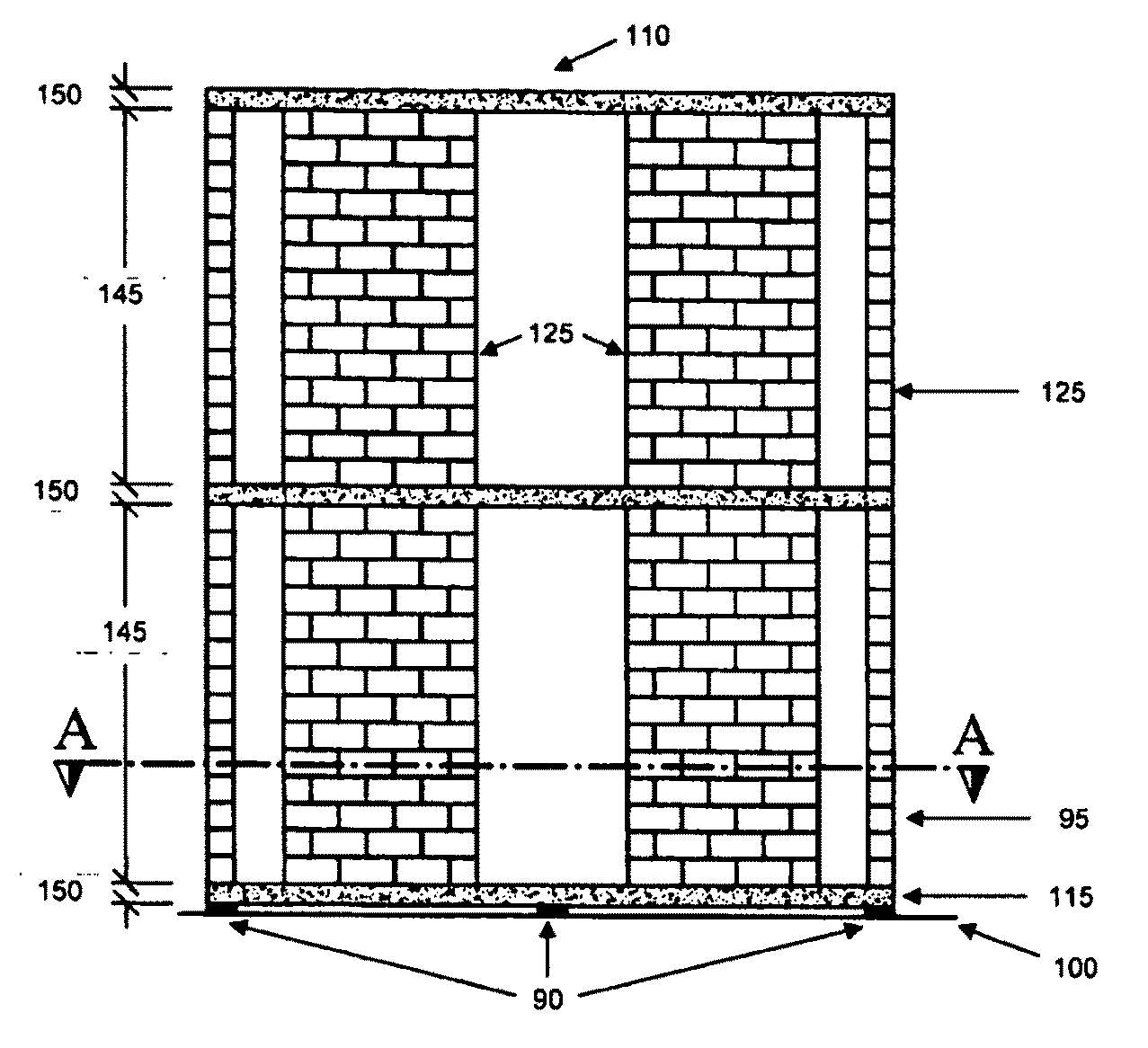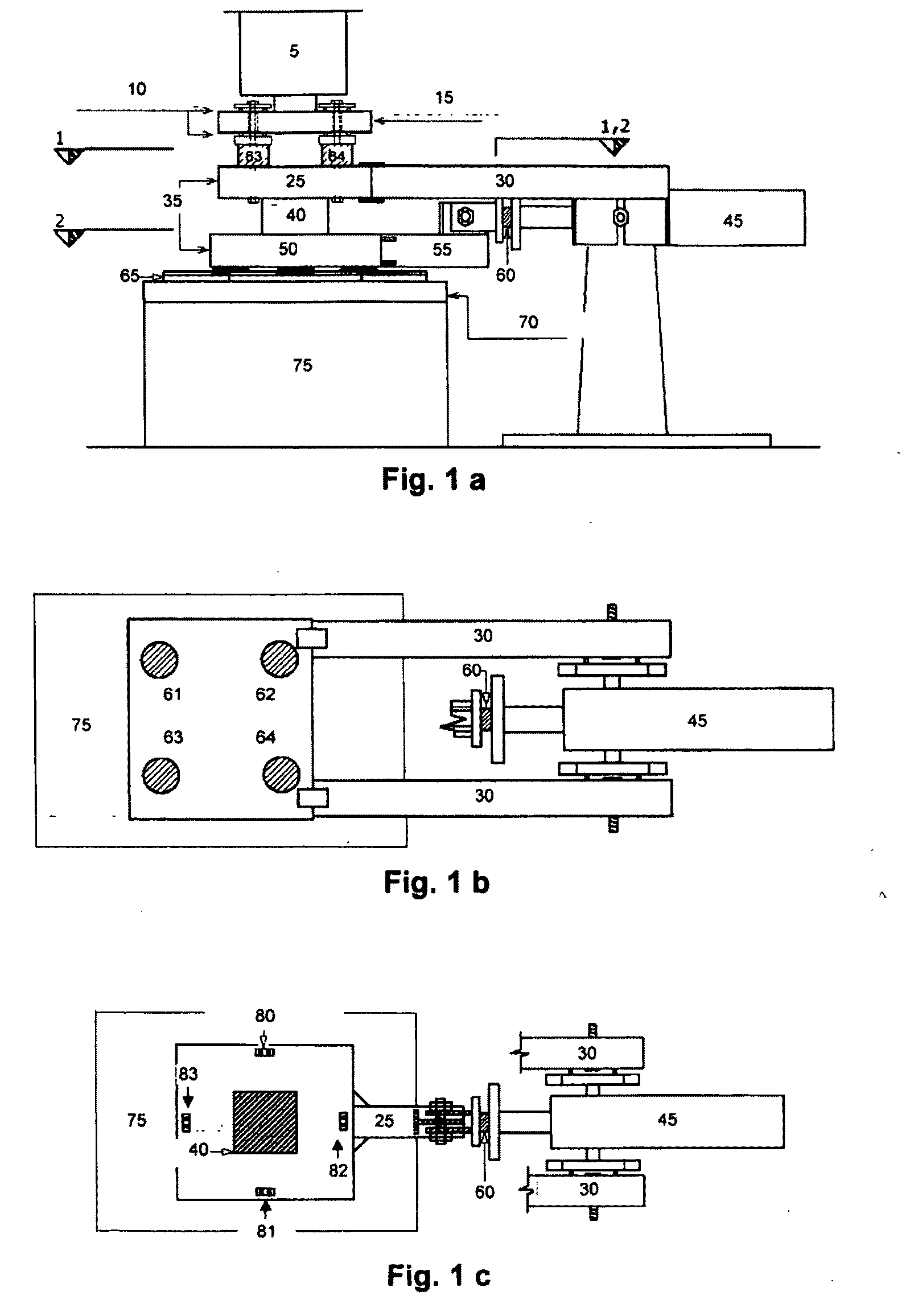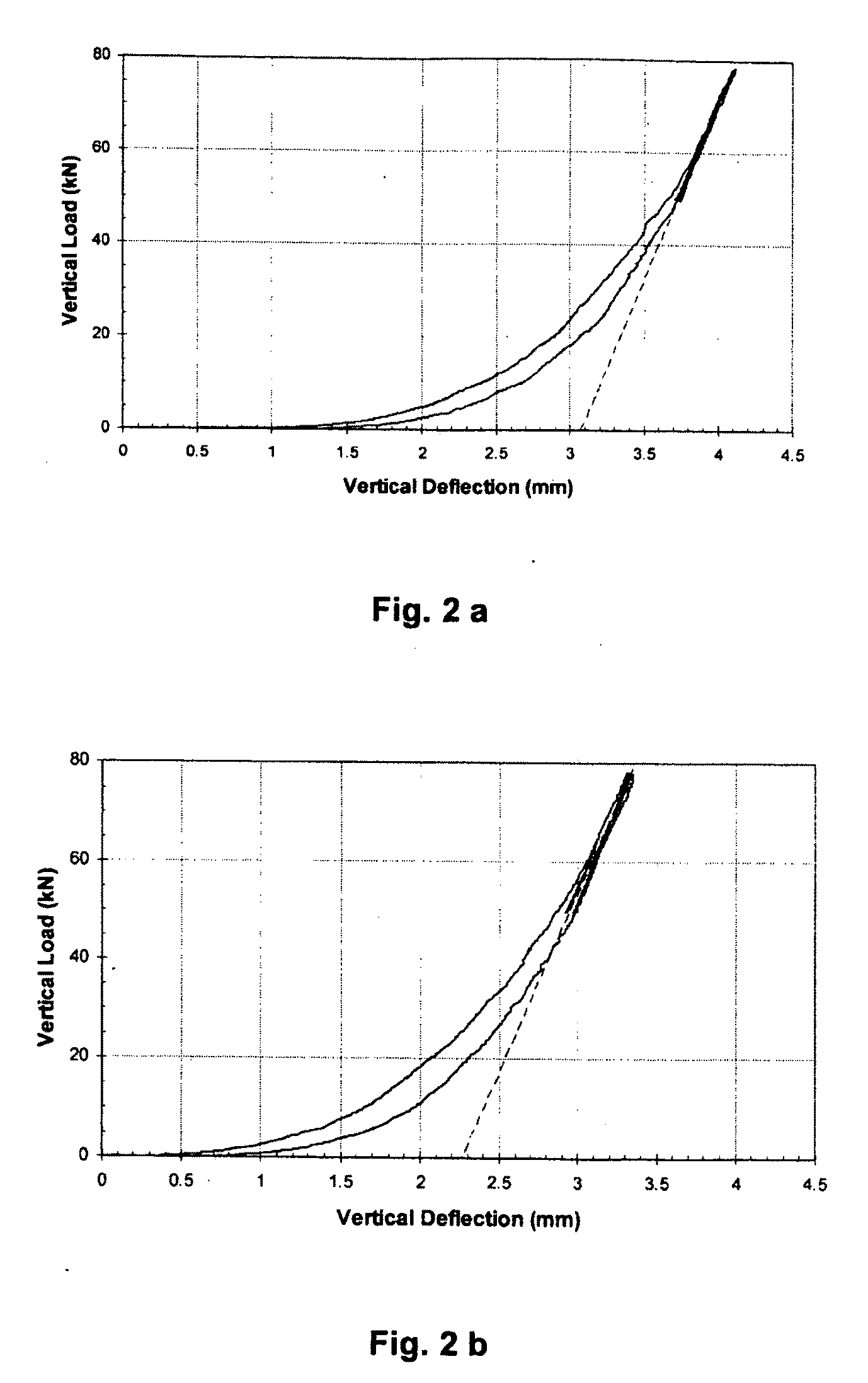Stable unbonded fiber-reinforced elastomeric seismic isolators for base isolation system
- Summary
- Abstract
- Description
- Claims
- Application Information
AI Technical Summary
Benefits of technology
Problems solved by technology
Method used
Image
Examples
example 1
Summary of Example 1
[0108]Test results for this embodiment were conducted on square carbon-FREI bearings employing soft compound low damped natural rubber as the elastomer. The bearings were meant to be used for base isolation in structures such as ordinary low-rise residential and commercial buildings or other low-rise structures. The bearings were not bonded to the test platens. For bearings having suitable aspect ratio values (i.e., NB1 and NB2), this particular type of application has resulted in a stable rollover (SR) deformation, which reduced the horizontal stiffness and increased the efficiency of the bearing as a seismic isolation device. As such these bearings are denoted as stable unbonded (SU) FREI-bearings.
[0109]Cyclic tests on SU-FREI Bearings NB1 and NB2 showed that the isolated period of these bearings, depending on the severity of earthquake, vary between 1.1 to 1.4 s and 1.0 to 1.2 s, respectively. Furthermore, NB1 and NB2 were tested at up to 140 mm and 120 mm lat...
example 2
Summary of Example 2
[0145]Lateral cyclic testing was conducted on ¼ scale carbon Fiber Reinforced Elastomeric Isolator (FREI) bearings. The bearings were employed in an unbonded application as they were not attached to the upper and lower platens of the test machine. Since the fiber reinforcement has no appreciable flexural rigidity, the unbonded application resulted in a SR-deformation in the bearings when they were laterally deformed. The full contact vertical face lateral displacement (δfc) of the bearings occurred when their originally vertical faces completely came in contact the upper and lower platens. Rollout instability lateral displacement, which is denoted as δmax, is expected to be significantly larger than δfc. All tested bearings exhibited a positive incremental load-resisting capacity throughout their lateral load-deflection response. The bearings showed damping ratios larger than the supplier-specified inherent damping of the utilized elastomer. The effective horizon...
example 3
Summary of Example 3
[0179]Four ¼ scale square FREI bearings were experimentally studied under various test sequences in this research program. The test bearings were employed in an unbonded application. The test results showed that this application maximized the efficiency of the bearings as seismic isolators. Response characteristics of the tested SU-FREI bearings were found to be similar to those of conventional steel reinforced high-damped rubber bearings in the sense of changes in the effective horizontal stiffness and damping with change in the amplitude of displacement even though an unfilled elastomer was utilized.
[0180]In general, the lateral response of the SU-FREI bearings was found to be highly nonlinear with some sensitivity to the amplitude, amplitude history and rate of the cyclic lateral displacements imposed to the bearings, and to the level of vertical pressure on the bearings. Additionally, the transition between virgin and scragged properties of the elastomer, add...
PUM
| Property | Measurement | Unit |
|---|---|---|
| Fraction | aaaaa | aaaaa |
| Fraction | aaaaa | aaaaa |
| Fraction | aaaaa | aaaaa |
Abstract
Description
Claims
Application Information
 Login to view more
Login to view more - R&D Engineer
- R&D Manager
- IP Professional
- Industry Leading Data Capabilities
- Powerful AI technology
- Patent DNA Extraction
Browse by: Latest US Patents, China's latest patents, Technical Efficacy Thesaurus, Application Domain, Technology Topic.
© 2024 PatSnap. All rights reserved.Legal|Privacy policy|Modern Slavery Act Transparency Statement|Sitemap



